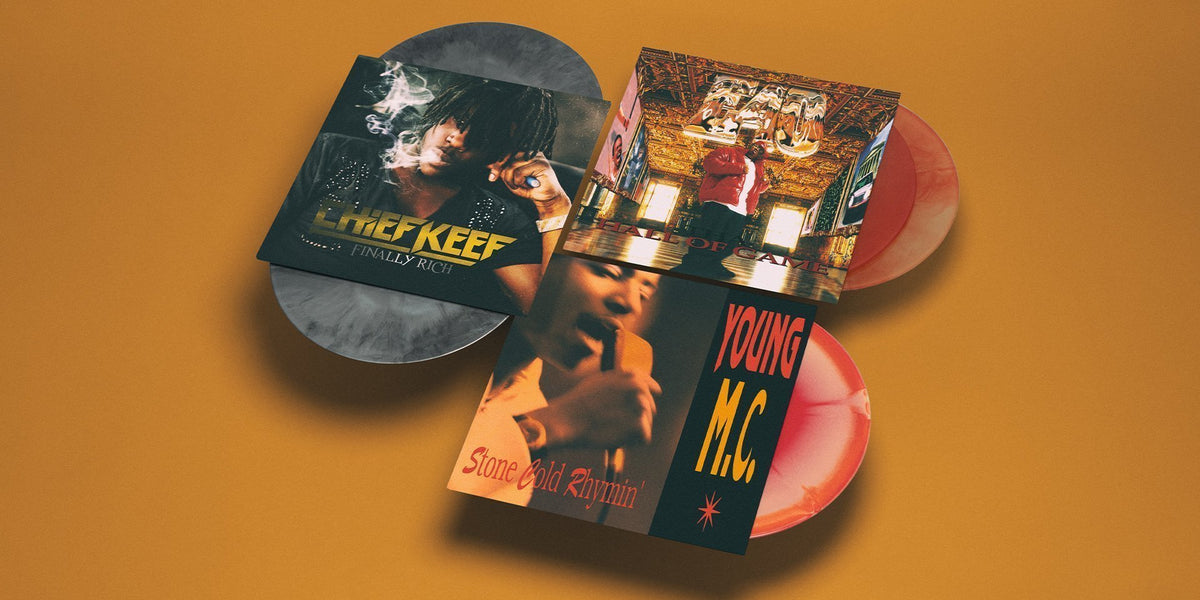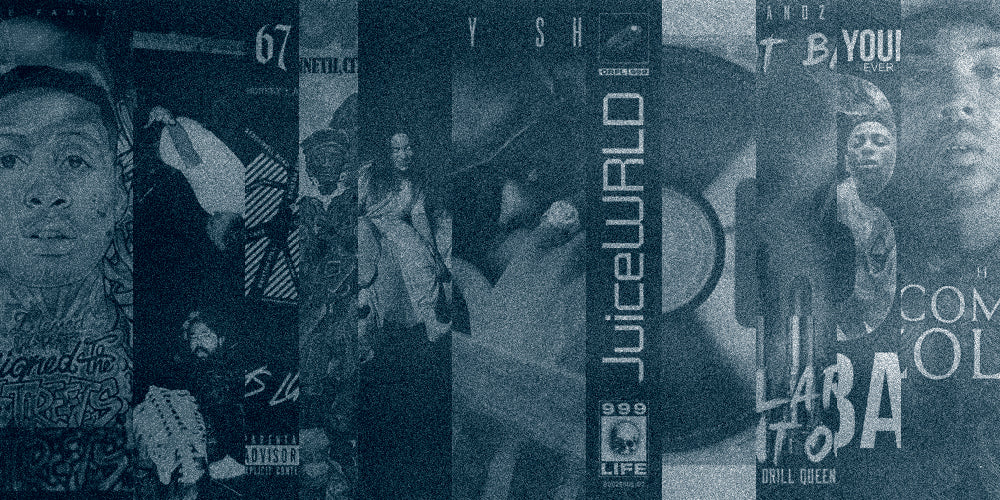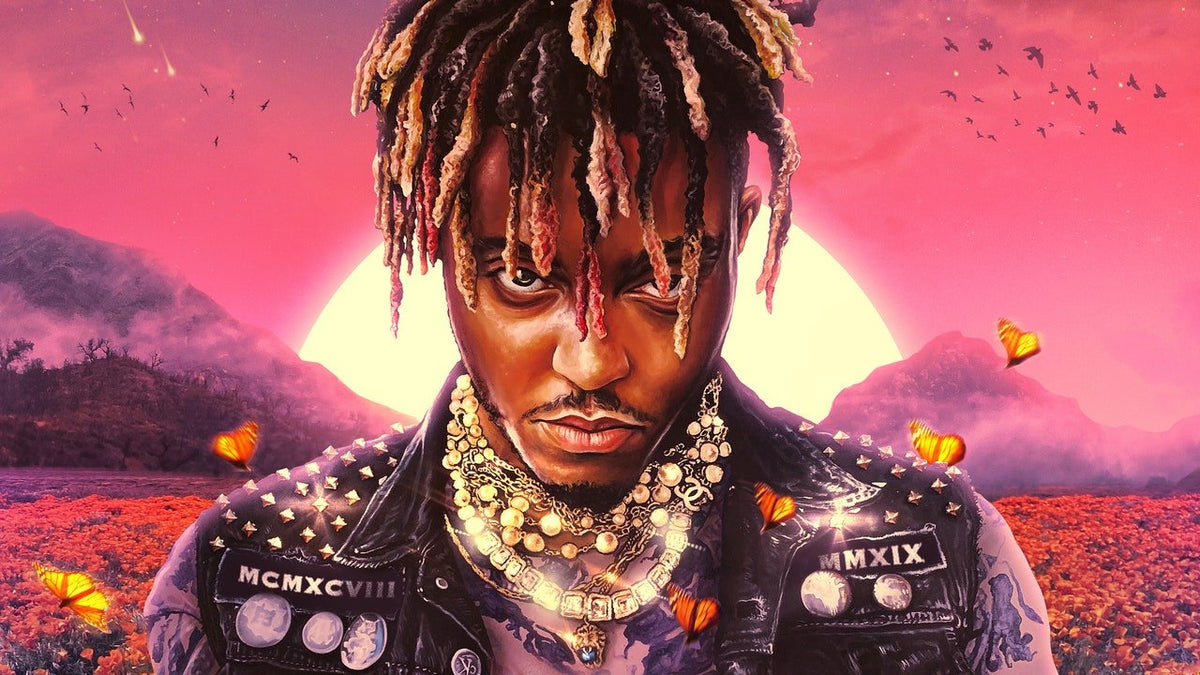Chief Keef Debuted with a Drill Opus
From street life to luxury on the Chicago rapper’s first album, ‘Finally Rich’
You can’t tell the story of the teenage phenom Chief Keef without first talking about violence. Not just America’s violence; more specifically, Chicago’s. Physical violence, of course, but also violence of a psychic and spatial nature. Violence that dates back to the late ’50s. Structural violence that creates the pretext for street violence.
As the sun set on the ’60s, Chicago mayor Richard J. Daley’s city planning uprooted Black families from their homes. “Redlining” practices pushed them into overcrowded ghettos on the West and South Sides. With the formation of predominantly Black communities came Parkway Garden Homes, one of the last low-income housing projects designed by the architect Henry K. Holsman, a suburb on Chicago's “Black Belt” that, by 1976, had become home to a burgeoning Black middle class that included the families of Michelle Obama and Gordon Parks. By the ’90s, things were turning. “Street sweeps,” a preventative measure taken against gangs, led to the arrests of thousands of Black and Latin residents, and the Black Belt saw a dramatic drop in employment rates. “Many of today’s problems in the inner-city neighborhoods — crime, family dissolution, welfare — are fundamentally a consequence of the disappearance of work,” a 1996 New York Times Magazine feature by William Julius Wilson summarized.
In the 21st century, Parkway Gardens has become a battleground for the gangs, the Black Disciples and the Gangster Disciples. The nearby Randolph Towers — 144 apartments spread across 16 buildings — which had been a GD stronghold before it was demolished in 2007, sent many of its occupants to Parkway. Rival gang members were forced onto the same shrinking turf, escalating tensions. “You have kids on both sides who are fenced in because of their conflicts with each other,” the Rev. Corey Brooks told the Chicago Sun-Times, before explaining how the once-proud community had changed: “The environment was family-focused. People were working. When you eliminate all those things from a community — men not in the household and education failing — it will be a drastic difference than what the first lady of the United States and her family experienced.”
There are many decades worth of history that produced Finally Rich, Chief Keef’s debut album, an onomatopoeic, flawed, but nonetheless electrifying depiction of portaling one’s way out of street life and into luxury. It is a visceral project about a prodigy reveling in his victory, about going from surviving to thriving. To this day, it remains the most straightforward display of star power from a mercurial rapper with little use for it — one who would go on to be among the most influential artists of the 2010s.
Chief Keef, born Keith Cozart, grew up in the Parkway Garden Homes, on a strip of road on the South Side known to its inhabitants as O-Block, named after a murdered GD member named Odee Perry. Dubbed “the most dangerous block in Chicago,” more than half the population lives in poverty in Parkway. O-Block is controlled by the Black Disciples, and the surrounding areas have become rife for bloody, inherited conflicts between the gang and their rival. Nineteen people were shot on O-Block between June 2011 and June 2014; none of the shootings were resolved. It’s a conflict that Keef inherited as a teen, belonging to the former; a confrontational way of life shaped by decisions far beyond Keef’s control. “Our city is violent,” he told the Chicago Tribune in 2012. “Everybody’s trying to rap now, so they could probably stop the violence. But it’s too much hatred in Chicago, to me. But it is my city. It is my city, where I was born, but you know, that’s how it is.” Early in his career, he was determined to upend the way things were — for him and those around him — pushing the city to some sort of utopia. Haters were met with crushing hostility or a laugh, and as Keef was maturing into his style, he stood at the forefront of a changing rap guard.
By the early 2000s, a new street-minded sound was taking hold in Chicago, inspired by the more bombastic and aggressive stylings of Atlanta trap. A local rapper named Pac Man coined the term “drill,” which soon became the marker of a movement. Pac Man was killed in a shooting in 2010, but his legacy was carried on by fellow Dro City rapper King Louie. “I was introduced to the drill through my homie Pac Man,” Louie told Dazed in 2013. “‘Drill’ really means ‘hits,’ like when you go to shoot everyone.” The combativeness of the lyrics and the sound pulled directly from the local atmosphere, where hypervigilance and action are rewarded with mettle. The music was another way for these kids to assert themselves. As the music spread throughout local high schools, a videographer going by DGainz became its official documentarian, shooting videos for Keef, Louie and fellow drill stars Lil Durk and Lil Reese that captured the uninhibited nature of their get-togethers. “It seems the violence is inspired by the music, but really the music is inspired by the violence,” DGainz told Dazed.
Just listening, it’s hard to imagine anyone was more inspired than Keef. As a child, he started rapping into his mom’s karaoke machine. By 2007, at 11, he’d started recording his first songs with a Japanese-born producer and DJ named Kenn. (Originally from the Yamagata Prefecture, Kenn ran into Keef’s uncle, Big Keith, walking his dogs while in town from New York and looking for a place to live in Chicago. Big Keith took him in.) Kenn produced Chief Keef’s first two mixtapes, including 2011’s Bang. The music had the grandiosity of the beats Lex Luger had given to Waka Flocka Flame for his album, Flockaveli, released a year earlier, even borrowing his tag on “Setz Up.” Chief’s raw, set-trippin’ raps tottered through the production in songs called “What I Claim” and “I Aint Rockin Wit You.” Kenn’s beats brought bravado to Keef’s gunslinging, but one song from another producer named Young Chop stood out with its own unique energy. Keef reached out to Chop on Facebook, and Chop set up in Keef’s grandmother’s home, where they recorded another song called “3Hunna.”
With “3Hunna,” Keef and Chop discovered something: isolated, surging synth patterns lighting a clear path forward for Keef’s frank, seemingly free-associative provocations. Chop took the fanfare of beats by producers like Shawty Redd and Drumma Boy and warped it into something more sinister. When Keef growls the words “click, clack, pow” on “3Hunna,” he seems to be playing directly into the firing-pin mechanics of Chop’s beat. The success of “3Hunna” was soon exceeded by “I Don’t Like,” a prickly, spine-chilling inventory of the endless irritants surrounding Keef — sneak dissers, bad weed, fake shoes, among other things. In the first true hit of Keef’s career, he is honing a snarling style, abrasive in the verses and noisy in the ad-libs. Videos for both songs went viral on the then-nascent platform YouTube, which became a gateway to national exposure. In only a year, he’d become a phenom.
“3Hunna” and “I Don’t Like” both appear on Keef’s breakthrough mixtape, Back From the Dead, released in March 2012. In retrospect, the tape feels a bit like a meteor signaling the end of the dinosaurs. As rappers such as Jeezy and Rick Ross entered middle age and started to transition into street moguls, Keef’s music instantly carbon dated them. His music was active and youthful and a bit incautious. Jeezy tried to sign him. Rick Ross eventually appeared on a “3Hunna” remix. That fall, Kanye West remixed “I Don’t Like,” introducing Keef to a wider audience. A bidding war ensued. On the Back From the Dead opener, “Monster,” Keef rapped, “Chief Keef Sosa, I’m a known topic,” and he was. “She say she love me, whatever that is / Do me a favor, save that shit,” he raps on the closer, the irreverent playboy proclamation of an inflated adolescent ego growing larger amid national attention. In no time, Keef signed a $6 million, three-album deal with Interscope that included a $440,000 advance.
It was from all this hype that Finally Rich emerged, a drill opus that reverberated in all sorts of directions. The album shares some of its most indelible songs with Back From the Dead — including “3Hunna” and “I Don’t Like” — but it also captures Keef amid a rapid evolution in his new material. Seemingly left to his own devices, the album is pretty out-there for a major label debut. More an expressionist than a lyricist, Keef uses his songs to experiment with tone, texture and force, foreshadowing an exploratory future. The opener, “Love Sosa,” has a one-minute lead-in before it erupts into a maelstrom of animosity, with Keef somehow mustering an infectious, rambling hook about his gang’s kill-death ratio. The three-song run from “No Tomorrow” to “Kay Kay” has a little bit of everything: spacely Mike WiLL Made-It production, grumble pop, robotic Auto-Tune that sounds like it’s malfunctioning, money machine ad-libs, nursery rhyme flows.
The music, new and old, is imbued with the certainty of the title — finally rich, as if it were destiny. In an interview, used as an intro to “Ballin’,” Keef weighs his personal expectations against the ones the world set for him. “I used to tell people like: ‘Imma buy this, Imma buy that, Imma get this, Imma get a car, Imma be famous before you. Imma be rich before you,’” he said. “They thought I was gonna be some motherfuckin’ screwup or somethin’, they thought I was gon’ be like bad all my life.” Plenty of the songs on the album are bold and mischievous in the face of being proven right, getting high in designer clothes in foreign supercars. The juxtaposition is riveting: What business does this gangbanging kid have wearing Salvatore Ferragamo? He is constantly playing up the absurdity of this “glo’ up” (a phrase he coined) with lollygagging rhymes that seem to tease the listener. The least subtle of these is “Laughin’ to the Bank,” which is nearly tawdry in the wake of improbable success. But even as Keef transitioned into a new tax bracket, he never stopped repping his turf: “I’m from O-Block, bitch, that’s my block,” he raps in the first line of the first verse.
Keef brought the bullishness of gangland life to his music, underscored by the dauntless way he moved in his songs. In her 2004 consideration of Black masculinity, We Real Cool, bell hooks called gangsta culture “the essence of patriarchal masculinity.” She quotes Black Panther Party leader, activist and writer Eldridge Cleaver, who, in his book Soul on Ice, wrote: “In a culture that secretly subscribes to the piratical ethic of ‘every man for himself’ … the logical culmination of this ethic, on a person-to-person level, is that the weak are seen as the natural and just prey of the strong.” Black boys, hooks argues, many fatherless and seeking manhood, take the ethic to heart. Keef is not absolved of this. Though less rapacious than Back from the Dead, Finally Rich does lean into patriarchal masculinity through gang affiliation — the trappings of misogyny and alpha male status. Keef, however, is far from Darwinian in his approach. For him, there is solidarity in the gang. He is willing to sacrifice for his guys. We know this because they pop up so much in song that they become familiar names: Fredo and Tadoe and Ballout; D-Money and D-Rose and Reese. When he sings, “Me and my niggas, we balling,” the implication is that they only succeed together.
bell hooks probably hasn’t listened to Chief Keef, but I imagine that, if she had, she’d peg him as a poster boy for her critiques of rap — for his reactive rage, and an abusive personality picked up in childhood as the result of a kill-or-be-killed mentality. “Hip-hop is the place where young black males can deploy that rhetoric Julius Lester identified as a central aspect of power,” she wrote. “Black male hip-hop artists who receive the most acclaim are busy pimping violence; peddling the racist/sexist stereotypes of the black male as a primitive predator. Even though he may include radical rhetoric now and then, the hip-hop artist who wants to make ‘a killing’ cannot afford to fully radicalize his consciousness. Hungry for power, he cannot guide himself or anyone else on the path to liberation.” hooks, of course, is right: Rappers like Keef crave power, and in so doing willingly embrace the mechanics of an oppressive system. But to what end? I, for one, think it is asking too much of teenagers to lead others to liberation. Beyond that, though, Keef’s pursuit of power and money is really about agency.
Though his calm exterior is nearly impossible to penetrate, Keef’s motives are made clear: He sees the power afforded by money as a means to freedom from violence for those around him. It’s there from beginning to end. On “Hallelujah,” amid praise for all he’s been blessed with, he sets the stakes: “I do this so Lolo won’t have to worry again / And KayKay can be like pops and ride ’Raris and shit.” The scope only widens as he goes on. “So I gotta take care of my squad / ’Fore every fuckin’ body get robbed / For that night job and day job,” he raps on the title track. “That’s why I got rich / So I could take care of my mama / Take care of my daughter / And take care of my brothers.” To that end, the true spirit of Finally Rich is getting the chance for a clean slate — of removing yourself from a history of violence the best you can. Sure, Keef couldn’t stop repping O-Block or GBE, any more than anyone could separate themselves from their home and support system, but his determination to evolve manifested in the decisions he made. He never became an industry commodity, but he became an innovator.
Keef seemed to know he was changing the game as he was doing it — post-Common, post-Kanye, post-Lupe Fiasco, for a new kind of rap fan. “We created the New Chicago thing now that’ll probably have everybody from Chicago rapping like this in the future,” he explained in his 2012 Tribune interview. It moved way further than Chicago. Drill made its way to other American cities — most notably, New York — and beyond. The sound crash-landed in the U.K., in Italy, in France and in India, to name a few.
But Chief Keef’s interest lay elsewhere. He moved to Beverly Hills. He got into producing. He lost his Interscope deal and started making even weirder music. He released projects on a whim, with little regard for who might be listening. He shirked fame at every opportunity, yet he influenced an entire generation of rappers to follow his oddball choices. “Do you guys love me for creating Mumble???” he tweeted in 2018. He became a founding father of SoundCloud rap, too. And he did it all before turning 25. There has never been a career arc like his. But you can’t tell his story without this album, without its moment — without the violence in Chicago, and his escape from it.
Sheldon Pearce is the music writer and editor for The New Yorker, and the author of the book Changes: An Oral History of Tupac Shakur. Previously, he was a contributing writer at Pitchfork. He has worked for NPR Music, and his writing has appeared in The Guardian, Rolling Stone, The Fader, Spin, Dazed, Complex, Deadspin and others.
Related Articles
Join the Club!
Join Now, Starting at $36Pages








